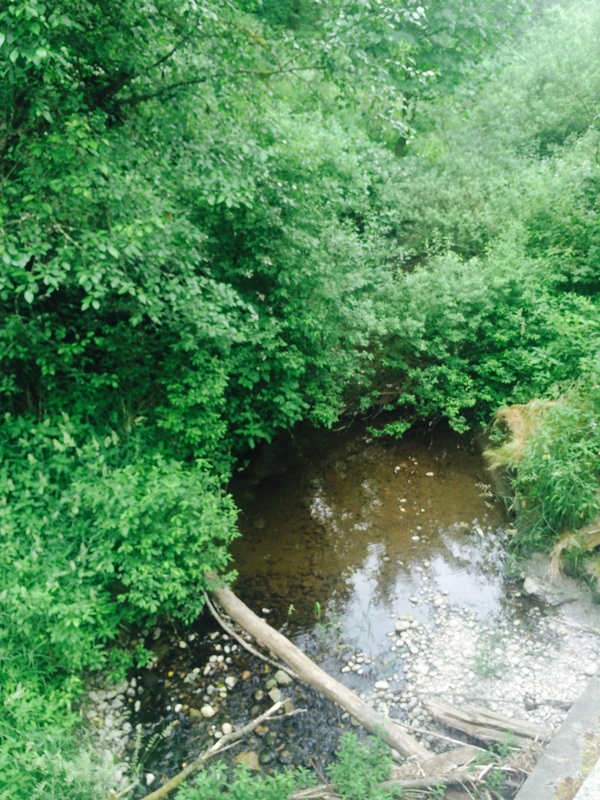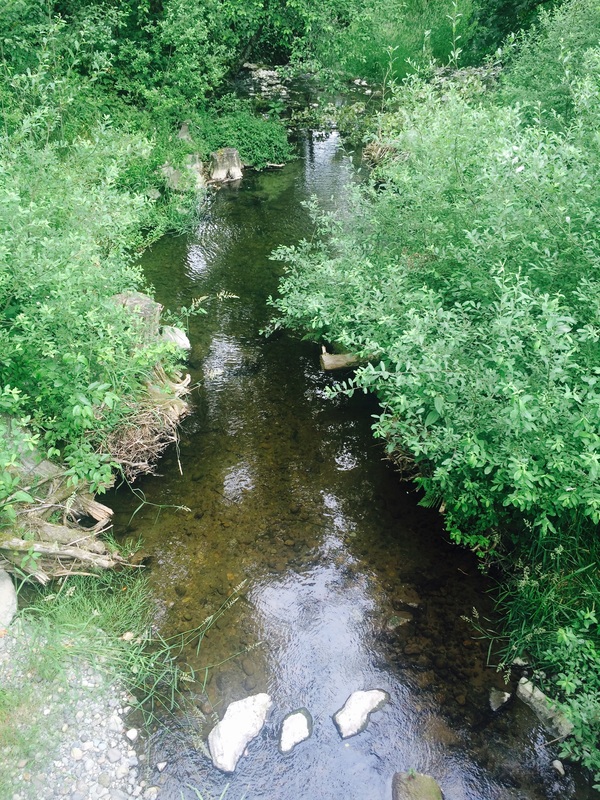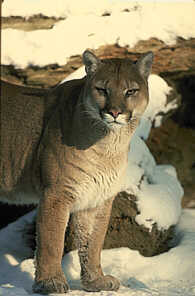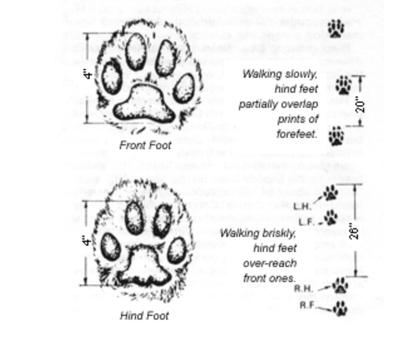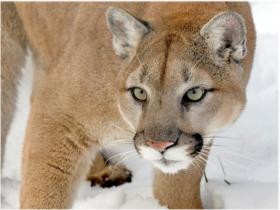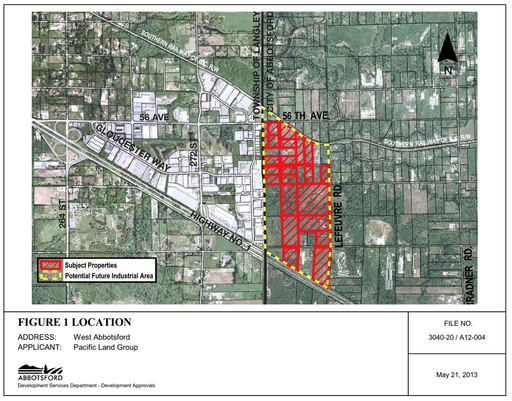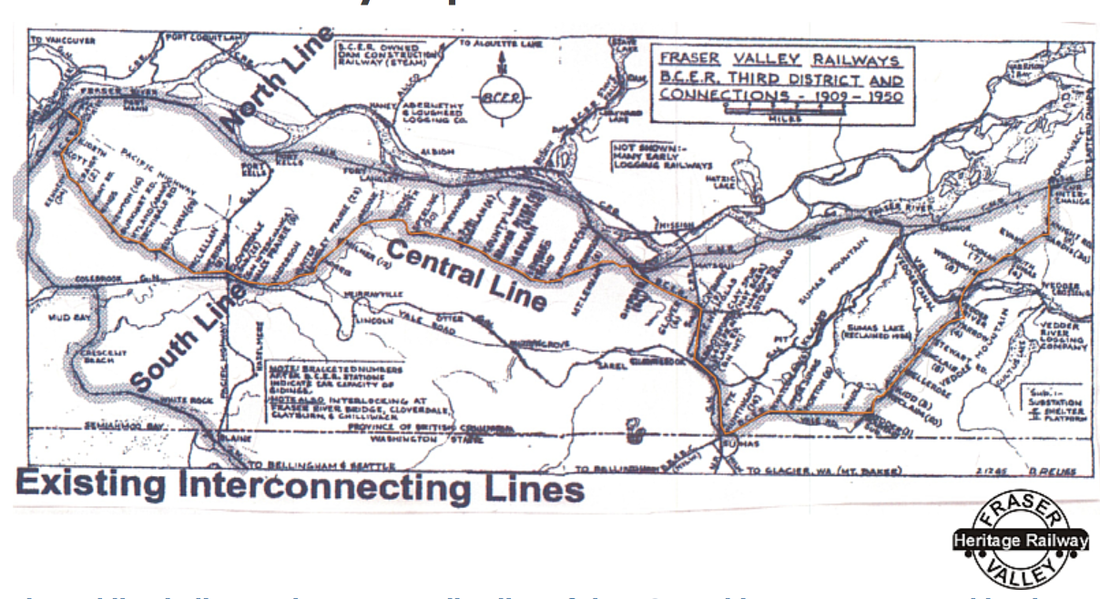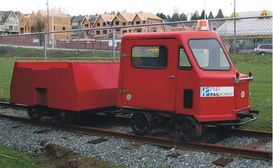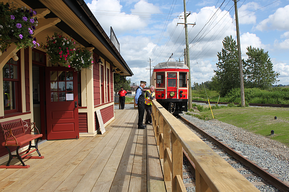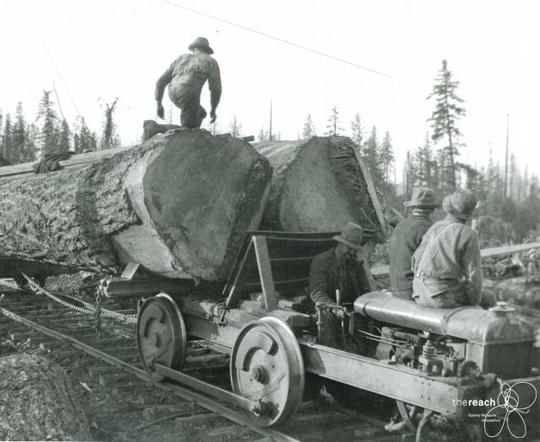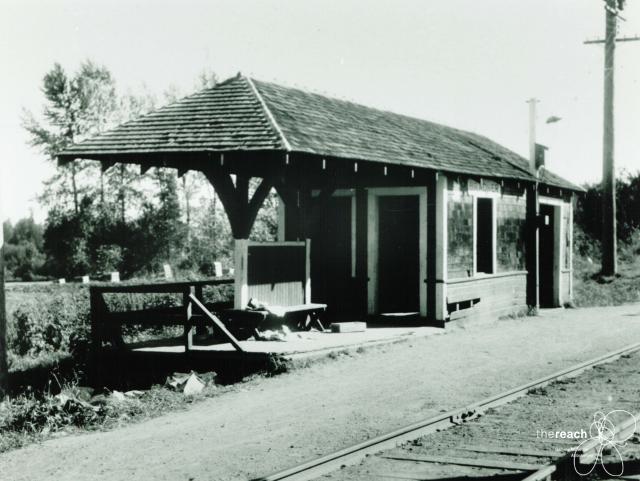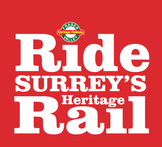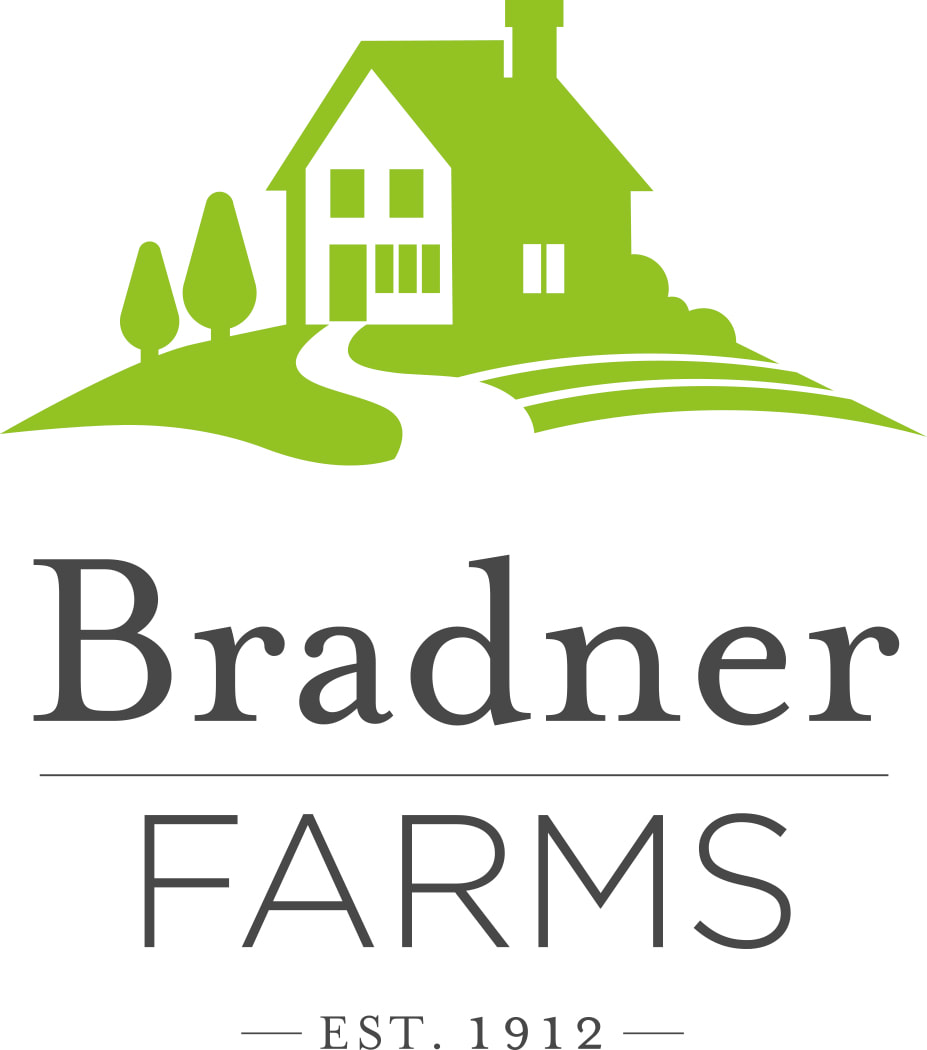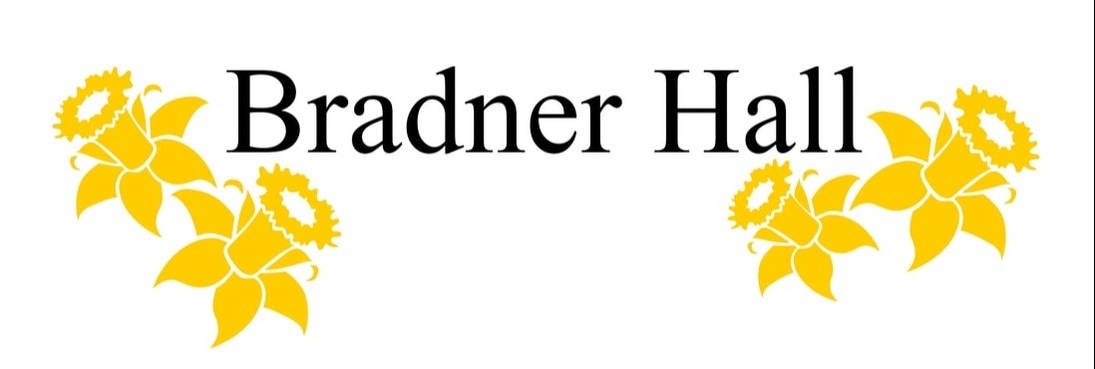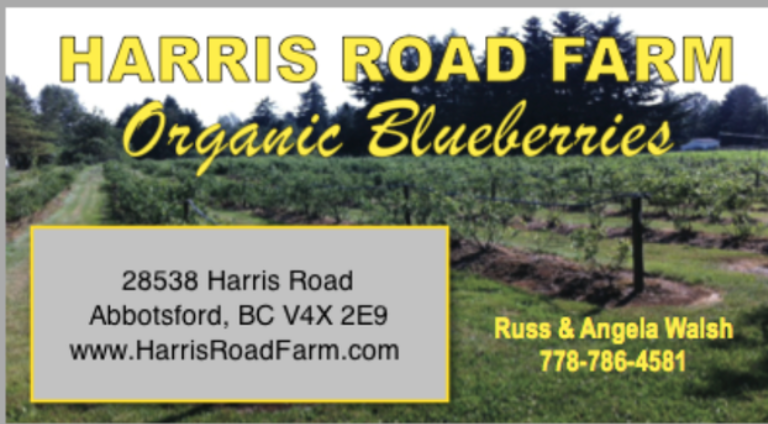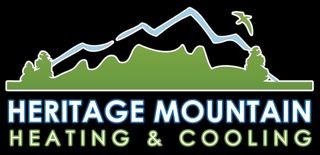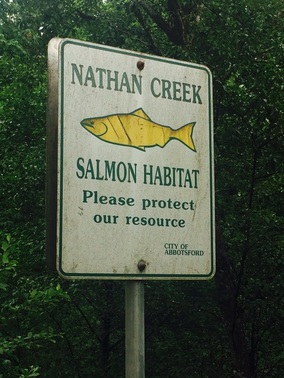 Image - Submitted Image - Submitted Nathan or Beaver Creek? A Bradner Barker contributor and reader wrote to me recently wondering, "Nathan Creek is actually called Beaver Creek, how it became Nathan is a mystery to all of us". I too have been confused about this very topic and have been curious to find answers. So with a bit of inquiring and research I was able to solve this mystery! The Glen Valley Watershed Society posted the history of the name origin on their website. Beaver Creek was known by the Bradner area's early settlers and Nathan Creek is still commonly referred to as Beaver Creek, particularly in the Bradner area of west Abbotsford BC. In 1914 a decision was made in Victoria, BC to change the name to Nathan Creek in commemoration of Henry Nathan who pre-empted land at the mouth of the creek in 1875. There doesn't appear to be any further record of Henry Nathan as a settler in the Bradner area. In 1939 the Geographic Names Board of Canada confirmed Nathan as the official name. Originally, Nathan Creek flowed several hundred metres East of the present dyke channel and joined the Fraser River through what is now known as Nathan Slough. The creek was diverted and dyked in 1911 - 1912, constructed by the Canadian Northern Railway, protecting much of the fertile natural prairie of Glen Valley from periodic flooding. While agriculture established in the lower parts of Nathan (Beaver) Creek the fine stands of timber in the uplands attracted loggers. For many years several sawmills flourished in the Bradner area. In the past, Nathan (Beaver) Creek has provided spawning areas for significant numbers of Coho, Pink, Chum and Steelhead Salmon, as well as Cutthroat and Rainbow Trout. While Chinook salmon are not known to spawn in the system, young Chinook fry from other creeks use the lower reaches to feed and rest as they venture to the ocean. Chum Salmon are no longer common in the system, and there is evidence that populations of Coho, Steelhead and Rainbow are declining.
0 Comments
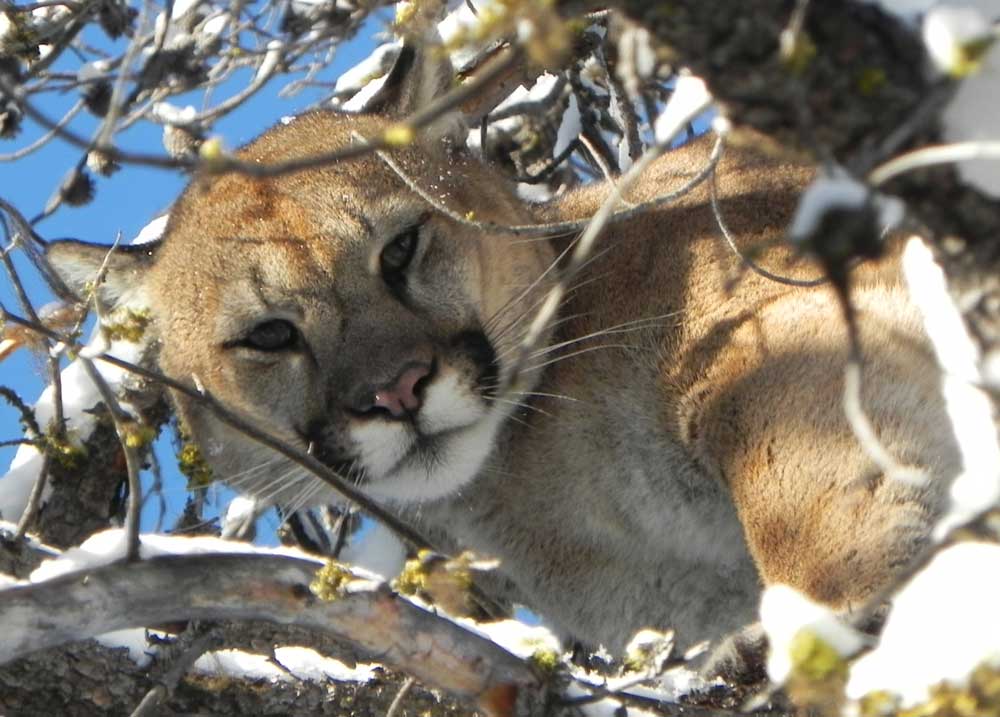 Photo Source - WildsafeBC Photo Source - WildsafeBC By Heather Lemieux, Editor Bradner BC - A member of the community reported to the Bradner Parent Advisory Council (PAC) that a large cougar was spotted just South of the lookout at the end of Bradner Road near Jubilee Hall last night, June 17th, 2015 at about 8:00 pm. The cougar is the largest of the three wild cats in Canada and is a fierce hunter. These cats are light brown in colour and are quickly identified by their compact head and large heavy tail which has a black tip. Cougar tracks are large padded prints with no claws showing. Like domestic cats, cougars keep their claws retracted until needed for attacking their prey or climbing trees. Use the Wildlife Alert Reporting Program (WARP) to find a map that shows where cougars have been sighted in the community along with information about what has attracted them. By knowing where wildlife is and what is bringing it in, we can do our part to keep our wildlife wild and our community safe. Cougars are stalking hunters with extremely good vision. They have large home ranges and males have been recorded traveling over 50km in one day. Young cougars stay with their mother for up to two years. Many urban incidents occur with young cougars that have not yet learned how to hunt effectively or older animals that can no longer hunt in the wilds.
Cougars are secretive animals and are seldom seen by hikers and also go by the name mountain lion, puma and panther. Cougars are strictly carnivorous and usually hunt deer, sometimes young moose, elk and bighorn sheep. Cougars will also prey on rabbits, squirrels, beavers or other small animals if the opportunity presents itself. When rabbits are plentiful they can form a substantial part of a young cougar’s diet. Since deer are one of the cougar’s primary food sources, there is a good possibility of finding cougars using an area where deer are abundant, especially a wintering area. Contrary to popular belief, cougars do not pounce on their prey from overhanging rocks or trees, but stalk an animal and then use an explosive series of bounds to leap on their prey. Using both their razor sharp claws and powerful jaws they can quickly kill most prey they choose to attack. Large prey takes a number of days to eat and the cougar will pull debris over the carcass to keep off scavengers. The cougar will stay near a kill site, returning to it regularly until the prey is completely consumed. Attacks by cougars are rare but can be fatal, especially if young children are involved. Cougars in conflict are usually young cougars that have not yet learned how to hunt efficiently and are looking for an easy target, or are older cougars that can no longer hunt efficiently in the wilds. If you encounter a cougar, keep calm. Make yourself look as large as possible and back away slowly, keeping the cougar in view, and allowing a clear exit for the cougar. Pick up children and small pets immediately. Never run or turn your back- sudden movements may provoke an attack. If you notice that a cougar that is watching you, maintain eye contact with the cougar and speak to it in a loud firm voice. Reinforce the fact that you are a human and not an easy target. Back out of the area and seek assistance or shelter. If a cougar shows aggression, or begins following you, respond aggressively in all cases as cougars see you as a meal. Keep eye contact, yell and make loud noises, and show your teeth. Pick up nearby sticks, rocks, or whatever you have at hand to quickly to use as a weapon if necessary - crouch down as little as possible when picking things up off the ground. If the cougar attacks, fight back, focusing on its facial and eye area. Use rocks, sticks, bear spray, or personal belongings as weapons. You are trying to convince the cougar that you are a threat, and are not prey. Call the Conservation Officer Service reporting line at 1-877-952-7277 to report the incident. Cougars are wide ranging animals and may show up in urban settings from time to time. If they are passing through it is important they do not find prey items that may encourage them to stay. Feed pets indoors, or if fed outdoors, bring in any uneaten food as the smell of pet food may attract cougars in addition to the pets (potential prey) themselves. Keep your pets indoors, especially at night. Cats and small dogs that are left to free-range can become easy prey targets. Bird feeders can attract cougars. If the ground below the feeder is not kept clear, seeds can accumulate, attracting rodents and, in turn, attracting cougars that feed on the rodents and other animals such as deer that are brought in by the bird feed. If you keep chickens or small livestock use a properly installed and maintained electric fence. Store all your feed in a secure location and ensure feeding areas are clean and free of attractants. Never feed deer or other possible prey species for cougars. While deer may be pleasant to watch, they can attract large predators into residential neighbourhoods. Cougars may view children as prey targets due to their small size, high-pitched voices, and quick movements. In the event of a cougar encounter, pick up your children immediately. It is important to talk to your children and teach them what to do if they encounter a cougar. Children playing outdoors in cougar country should play in-groups. Do not leave children unsupervised. Consider getting a dog or using a dog as an early warning system. A dog can see, smell and hear a cougar sooner than a human. Consider erecting a fence around play areas. Make sure children are home before dusk and stay indoors until after dawn - the period of time cougars are most active. If there have been cougar sightings, escort children to the bus stop early in the morning. Clear shrubs away from around the bus stops, making a radial area of about 9 metres. Before heading out into the outdoors, familiarize yourself with cougar habits and biology. Travel in pairs or groups, be alert for tracks, scat, scratched trees and other signs of cougars like animal carcasses buried under vegetation and make noise as you travel to alert wildlife of your presence, avoiding surprise encounters. If you come across a food cache ex. buried prey, leave the area immediately. If you happen to encounter cougar kittens, leave the area immediately and do not approach or handle them. Female cougars are very defensive with their young. Cougars hunt at any time of day and night through all seasons, but they are most active during the period from dusk until dawn and this period requires extra vigilance by hikers or campers while in cougar country. To stay safe in cougar country, avoid hiking alone, travel in pairs or groups. Cougars are less likely to attack groups of people. If you keep chickens or small livestock, a properly installed and maintained heavily woven-wire or electric fence can help prevent your animals from becoming meals for a cougar. Chicken coops and runs should be covered as cougars may leap or climb over fencing. Put small domestic livestock in an enclosed area at night. Use lighting around barns and pens to deter predators. Store all your feed in a secure location and ensure feeding areas are clean and free of attractants. Livestock feed attracts rodents and other animals, which in turn can attract cougars. Additional animal husbandry techniques may be useful in deterring cougars from preying on livestock. Cougars prefer to hunt and stay where escape cover is close by. Removal of brush and trees within .4 km radius of buildings, barns and livestock corrals can result in reduced predation/harassment. Keeping newborn livestock inside barns or sheds will usually prevent predators and will also reduce newborn deaths that result from inclement weather. Avoid using pastures that have had a history of predators. Pastures that are closer to buildings and human activity can be safer for young livestock. Pastures with rough terrain or with dense vegetation bordering them offer cover for predators. Check on the status and condition of livestock regularly in order to ensure that predator problems are identified quickly. Regularly counting livestock is important in large pastures or areas with heavy cover where dead livestock could remain unnoticed. It is not unusual for livestock producers that don't regularly count their herd to suffer substantial losses before they identify that they have a predator problem. Sick, injured or old livestock should be removed from the herd as predators may key in on these animals. Once a predator identifies livestock as easy prey it will likely continue to kill even healthy animals. Remove livestock and poultry carcasses by burying, incinerating or rendering to reduce attractants. Farmers and ranchers must comply with all federal, provincial, and municipal regulations surrounding hunting, trapping and the use of firearms. If livestock is injured or killed, you may report it to the Conservation Office Line at 1-877-952-7277. Please report all wildlife sightings to the Conservation Officer Hotline 1-877-952-7277 or post on WildSafeBC wildlife tracking website www.wildsafebc.com/warp Re-submitted By Kerry Proudfoot, on Nov 14, 2012
Bradner BC - As a long-term resident of Bradner, I am very afraid for the community right now. Interests outside the neighbourhood have been trying to capitalize on the speculative nature of the ALR land next to Langley’s Gloucester Estates, and have it rezoned to industry for years now. In 2004, citizens rallied and Abbotsford removed those almost 300 acres from the city in the country plan altogether, and we all felt like we had slayed the industrial dragon. Fast forward to 2012. After at least two other failed attempts, those same outside interests are at it again, only this time they’ve hired the big players and all the angles are covered – much to the delight of the city, which is desperate for money. Very frightening for those of us in Bradner/Mt. Lehman, indeed. I pray the city does not sell us out just to make a buck and save their own behinds. I’d like to think that this historical little enclave is worth more than that. Please consider that 50 per cent of Gloucester Estates is still empty after all these years, and any monetary predictions about Abbotsford are merely pie-in-the-sky job figures that make for great spin. The line should be drawn at the Langley border. Those of us who contribute to this amazing rural neighbourhood with plans of living here indefinitely, may soon change our plans once industry starts rearing its ugly head. This is a thriving agricultural community, and it has been for over 100 years. To rape and pillage Bradner to serve the financial interests of a cash-starved city and a select few who have no business making decisions about our neighbourhood, would be criminal. City council will hear both sides of the ALR versus industry argument Nov. 19 at 7 p.m., at city hall. Council could very well vote this through that night, and start the exclusion process with the ALC immediately. From what we are told, it could be a scant three years before the landscape becomes concrete for all time. If you care about the future of Bradner/Mt. Lehman at all, please attend the aforementioned city council meeting Nov. 19 and have your say. After that, it could be too late. Please help save Bradner from the chopping block. Kerry Proudfoot, Bradner Note: Original Letter posted on Abby News, Nov 14, 2012 at 5:00 PM - LETTERS TO THE EDITOR Links: Abbotsford City Council Report - July 6th, 2012 Abbotsford Council Report Executive Council Recommendations - May 24, 2013 West Abbotsford Business Park Study – Pacific Land Group - May 24, 2013 Preliminary Environmental Assessment - January 2013 By Heather Lemieux, Editor The British Columbia Electric Railway (BCER) established a regional railway to serve the Fraser Valley logging and agricultural communities that had been developing since 1860 from Brownsville to Chilliwack. (Brownsville was a former community in what is now the City of Surrey, BC and was also formerly known as South Westminster). The Fraser Rail bridge opened in 1904 linking New Westminster to the South shore and the BCER moved forward to establish the Interurban railway, which was a 68.8 mile long passenger and freight service that operated from October 1st, 1910 until September 30th, 1950. The passenger rail service was discontinued in favour of buses. The railway continues to operate but ownership has changed and it is now known as the Southern Railway of British Columbia (SRY Rail Link) The Fraser Valley Line is still intact and SRY Rail Link provides freight service to its customers along the historical rail corridor. 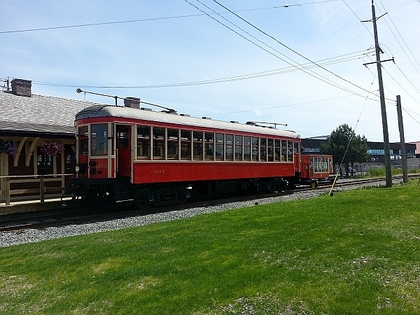 The fully restored BCER 1225, June 2013 at the Cloverdale Station - Source - http://www.fvhrs.org/news.htm The fully restored BCER 1225, June 2013 at the Cloverdale Station - Source - http://www.fvhrs.org/news.htm In 1996 the Surrey Heritage Advisory Commission conducted a feasibility study and in 2001 the Fraser Valley Heritage Railway Society (FVHRS) was formed. The FVHRS mission is to acquire, restore and operate BCER Interurban cars for tourism purposes on the original BCER route through Surrey and the Fraser Valley to link historical destinations. Seven (7) Interurban rail cars were saved from the destruction that took place in the early 1950's, when most Interurban rail cars ended up being burnt at the rail yard under the Burrard Street bridge. Some were purchased and moved to museums south of the border. The FVHRS has acquired two (2) of those for restoration to their operating condition. The first, BCER 1225 was the last car to operate in 1958 and has been fully rehabilitated to operating condition. After it's last run, it made it's way to the Orange Empire Railway Museum in California. It was purchased and moved back to BC by the FVHRS in 2005. Between 2008 and 2012, 18,000 volunteer hours and many community donations made the BCER 1225 restoration project possible. Now passengers can experience this heritage rail service aboard the 1225 between the Cloverdale and Sullivan Stations seasonally from May through mid October. 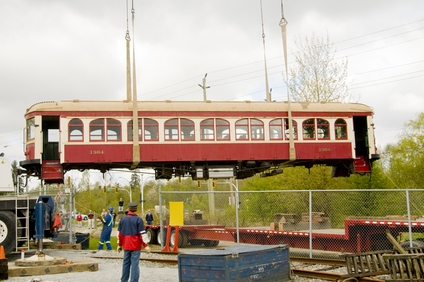 The BCER 1304 arrives in BC 04/2009 - Source -http://www.fvhrs.org/news_archive.htm The BCER 1304 arrives in BC 04/2009 - Source -http://www.fvhrs.org/news_archive.htm The second interurban rail car, the BCER 1304 ("Connaught") was acquired and returned to BC on April 25th, 2009. The "Connaught" was used by the Duke of Connaught, Canada's Governor General on his official visit to British Columbia in 1912. To prepare BCER placed the 1304 through an extraordinary transformation of fresh paint; the royal coat of arms was displayed boldly but delicately lettered in gold on each side. The BCER 1304 was the only Chilliwack car to survive the BCER Interurban car burning. It is currently under restoration by the FVHRS and should be operational by 2017. The BCER 1304 was originally built in New Westminster in June 1911, as part of the three car Fraser Valley Interurban work order for the 1303, 1304 and 1305, and was patterned after the existing 1300, 1301 and 1302 set.
The BC Electric Railway in Bradner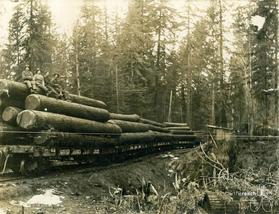 British Columbia Electric railcars, on a raised berm, loaded with Bradner logs - The Reach - P1587 - 1913 - Source - http://www.thereach.ca/photo/p1587 British Columbia Electric railcars, on a raised berm, loaded with Bradner logs - The Reach - P1587 - 1913 - Source - http://www.thereach.ca/photo/p1587 Until 1910, logging still provided the livelihoods for most of the settlers to the Bradner area. Then in 1910 a nearby stop on the new British Columbia Electric Railway changed how the community grew. The railway linked Bradner to areas from Chilliwack to Vancouver. With the arrival of the rail, valley communities became less dependent on the Fraser's paddle-wheelers to take their milk and produce to market in New Westminster. From 1910-1952 the BC Electric Railway provided passenger trains and freight service twice daily and an extra market train came through on Fridays. They also had a milk train every morning to carry dairy products. 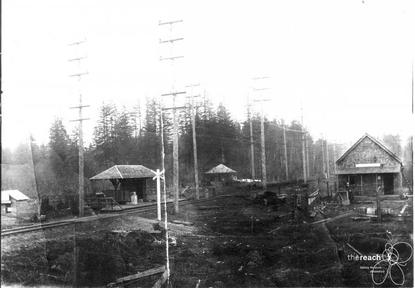 The Reach - P1588 1912 - Source - http://www.thereach.ca/photo/p1588 The Reach - P1588 1912 - Source - http://www.thereach.ca/photo/p1588 Thomas Bradner settled in this area in the 1890's, cleared his land and raised livestock. In 1911 the BC Electric Railway built a railline through the district. Bradner sold his land on which the BCER had surveyed for its right-of-way and moved out of the area but his name, given to the station built on his former property, remained. Typical of the growers in the Bradner district is Wessel (Bill) Bales, who specializes in bulbs and flowers on his 18-acre farm northwest of Bradner station on the BCER. The railway was integral to Bradner's agriculture economy, in addition to being a transportation service. Pictured right is Robin Fatkin, Pete Vander Zalm, Fred Sluggett and Nick Vander Zalm loading Bradner daffodil bulbs onto a railcar for shipment at the Bradner Station. 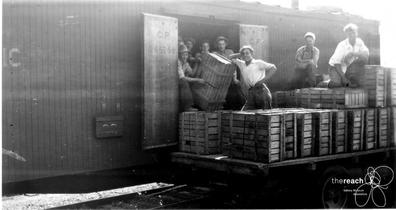 Photo courtesy The Reach - 1947 - Source - http://www.thereach.ca/photo/p3598 Photo courtesy The Reach - 1947 - Source - http://www.thereach.ca/photo/p3598 The railway continues to operate but ownership has changed and it is now known as the Southern Railway of British Columbia (SRY Rail Link). Although the train station closed to passenger traffic in 1952, today, community activists are looking to the former BC Electric Rail line as a resurrected option for public transit. Bradner residents will be pleased to know that the FVHRS plans to extend their operations. The current plan calls for the development of a full station at Newton Centre, adjacent to the city’s proposed light rail service from City Centre to Newton. This will provide the opportunity to access and ride the Interurban via the SkyTrain and Light Rail. The FVHRS's mission is to acquire, restore and operate BCER Interurban cars for tourism purposes on the original BCER route through Surrey. For the foreseeable future, rail links to other historical destinations in the eastern Fraser Valley aren’t available as the Deltaport higher speed rail corridor has virtually eliminated access to any destinations east of Cloverdale. Perhaps one day, additional track will allow such access and the Bradner residents may again enjoy the convenience of the Interurban. Please to support the FVHRS by donating, visiting, becoming a member or volunteering. The FVHRS provides training and has a variety of volunteer opportunities. Please call 604-574-9056 to learn more. Visit the FVRHS at the Cloverdale Station, foot of 176A St, South of HWY 10 (56th Ave) in Surrey. They are located across the street from the Surrey Archives (formerly Surrey City Hall) and next to the Surrey Museum.
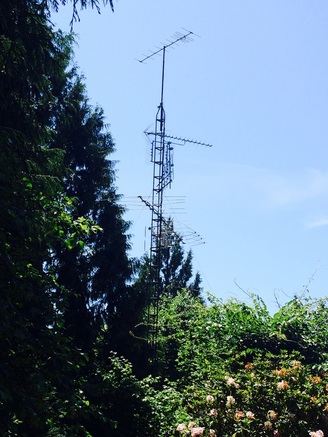 Antenna on Russ Walsh's farm, Bradner BC - Photo by Editor Antenna on Russ Walsh's farm, Bradner BC - Photo by Editor By Russell Walsh Recently there has been a bit of a reverse revolution going on in the North American TV industry. People are dropping cable television by the tens of thousands. The old TV antenna industry is seeing dramatic sales increases. Why? Because the cost of basic cablevision service today is expensive. Current rates are far beyond the $11/mo. rates I charged back in the 80's when I owned Pioneer Cablevision in the Fraser Valley. Today, basic service with Shaw costs about $40/mo. plus taxes. A basic TV package costs about $45/mo. Then, factor in the third tax – income tax, or the one you have to pay in order to earn the money in the first place. So, in order to pay $40/mo. for cable the average person would need to earn about $58 to pay for one months basic cable. That's about $700 a year! But, did you know that you can have basic TV service for FREE? I've been operating my free TV system in Bradner since 1980. For 35 years, saving me about $25,000 in cable bills! When TV stations changed from analog to digital a few years ago several things happened. First, they stopped broadcasting in the old 'low band' channels 2 – 6. The old 'high band' channels 7 – 13, continued on, but there is no high band TV broadcasting in the Vancouver BC area. USA stations however continued using the channel 7 – 13 spectrum. KCTS-9, KSTW-11 and KCPQ-13 are available in the Lower Mainland, on the 'high VHF band' channels 7 - 13. Secondly, the conversion of the modulation system which changed from analog to digital. Digital is way more efficient and transmitters don't need to be as powerful as the old analog ones in order to produce far superior picture quality. So, a channel that previously carried just one analog channel can now be used to carry three digital channels. In the old analog days, a signal to noise ratio of at least -5 dB (negative 5 dB) was required in order to produce a watchable picture. As the S/N ratio dropped the picture became worse and worse until at about -15 dB, the picture was so lousy that while watching a hockey game you couldn't follow the puck! Not so with digital. Digital TV produces a spectacular picture all the way down to about -18 dB. Which means it meets the 'digital cliff'. At the cliff, the picture goes from spectacular to nothing at all, maybe with a few pixillations and freeze ups as it reaches the cliff edge. Thanks to the digitization of TV service, you can now get spectacular reception using antennas that are a fraction of the size of those used in the old analog days. All TV broadcasting in the Vancouver area is on the UHF band – now channels 14 – 55 and the antennas are much smaller than before. So what channels are available 'over the air' in the Bradner area? Well, there's a set of tools available on-line that allow anyone in North America to not only check to see what channels are available right at their address, but you can also use the same tool to actually see the signals! The tool for checking free over the air TV reception can be found at tvfool.com. There are many things this site can do and you should play around a bit. It's like exploring. Prospecting. To search, click the 'Start MAPS' button at the right side of the screen. Enter your address in the 'Find TV Signals' input fields at the bottom of the page. Then click the 'Map This' box below the address section. You'll see a map pop up with a red pin indicating your search location. Scroll down the screen and you'll see a list of all the channels available for your address. The channel is always color coded. Green indicates signals that are very easy to pick up. Pink ones require an outdoor antenna. The grey ones will require a good outdoor antenna and a good preamplifier. The right hand column shows the S/N ratios. You can get flawless reception with numbers down to about -18 dB. The LOS (Line of Sight), 1Edge (the signal passed over a single ridge) and 2Edge (signal skipped, or refracted, over two hills)n ames refer to the terrain between your location and the transmitter. The central Bradner BC area is capable of getting about 23 FREE, over the air channels. Virtually all the networks, plus some independents. However, many of these channels carry multiple channels in their digital transmissions. KVOS, for example, has three channels embedded in its signal, and they show up on your TV as 12.1, 12.2 and 12.3. Likewise for KCTS, KBCB and a PBS station from the Seattle area. So in fact, the total number of channels is more like 34. Also on tvfool.com, you will notice that there are buttons down the left hand side of the listings. Clicking any one of these buttons will overlay on the map the actual TV signal for the selected channel. A broad view will be seen first, with the transmitter location, power and other data. The actual TV signal radiating out from the transmitter will be seen. Tip - close the white transmitter information dialog box by hitting the 'X' in the upper right hand corner of the box which makes it disappear, making the map easier to use. Move the map around and zoom in on your desired Bradner location. The plus '+' and '-' minus controls to zoom the map are in the upper left hand corner of the map just below the yellow, little man figurine. The result shows that KCPQ has good signal in the Bradner area from about 58th Avenue Northward. But take a look around! See the fabulous signals on KCPQ in the Aldergove and Abbotsford area. When taking a final zoom into Bradner, using KCPQ as a test shows that the signal is actually covers the entire area quite well. The database assumes a receiving antenna of just 10' ft. above the ground. Raise the height of the antenna and the signal will improve considerably. Antenna and Preamplifier SourcesAntennas are one of the most critical elements in the reception of television, there are huge performance differences between different antennas.
One of the best performers is antenna I on the graph which is the Winegard PR-8800. You can use the antenna selection tool for yourself by going to hdtvprimer.com. Two of the best UHF antennas are the XG91 and the Winegard PR8800. The antenna site also has a test page showing the results for high band VHF antennas. Ignore the left side graph because the low band, channels 2 – 6 no longer exist. The best antenna for channels 7 – 13 is the one marked BB, or the Channel Master 3671B. A good pre-amplifer is a must in order to receive distant TV channels, and one of the best performers is the Winegard LNA-200. A good local source of antenna, preamplifiers, and masts is SMI Industrial Electronics, on 64th Avenue across from NCIX in Langley, BC. Alternatively, Amazon has pretty much everything needed. A peaking meter is an essential tool if you hope to squeeze the best performance out of an antenna. You need to point the antenna in the right direction. Use a digital peaking meter. Pay a refundable deposit and borrow the meter from me. One may be inclined to think that by dropping Cable TV and moving to an over the air system you'll be compromising reception quality. In fact, the exact opposite is the case. Over the air channels are broadcast using the 8VSB (8 vestigal sideband) format. Cablevision on the other hand uses the QUAM system (Quadrature Modulation). QUAM compresses the signals drastically. Sure, they might be 'digital', but their original high definition has been compromised, and if you want high definition back, that's an upcharge! With over the air you get full, uncompressed signals exactly as they were broadcast. Visitors at our Bradner homestead comment at our over air reception, “I get that channel but it doesn't look anything like the quality on your TV...” This is because we use this over air system, so we get the full signal - without compression. Russ Walsh Bradner Resident
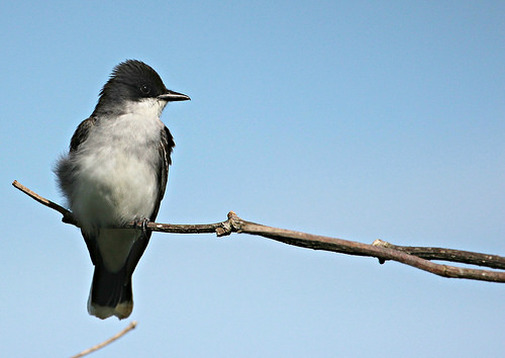 Image - Submitted, Eastern Kingbird Image - Submitted, Eastern Kingbird By Lisa Dreves Attached is the form for this year’s Glen Valley bird count results. Very interesting compared to averages from previous years. In the future consideration should be given to schedule conflicts with the big British Columbia Field Ornithologists’ Annual Conference and the bird count should be scheduled a week early instead of later so all the birds don’t disappear like they seemed to this year. Less birders turned out this year. Heat and scheduling of the bird count one week later than usual were thought to result in the low turnout. Count Results Showed the Following Compared to the Last Few Years Averages in Brackets:
Low Numbers:
High Numbers:
The big find this year goes to the team of Phil and Glenn – 1 Eastern Kingbird – the only other time we have seen one was in 2008! The highest numbers go to the team of Joan and Anne – nice job ladies! Thank-you so much for all of your help this year – the count would never be able to happen without so many talented birders! Lisa Dreves Langley Stewardship Coordinator Langley Environmental Partners Society 604-546-0336  Captain Hook & Peter Pan Group - Xenis Gallery Captain Hook & Peter Pan Group - Xenis Gallery By Marlene Xenis Bradner, BC - Only 2 weeks to go and we could really use your support to make sure our Kickstarter campaign is a big success.
WE NEED ALL THE SUPPORT WE CAN GET IF YOU CAN PLEASE MAKE A PLEDGE FOR ONE OF OUR REWARDS YOU CAN ACCESS OUR “PROJECT” THROUGH THE LINK ON THE FRONT PAGE OF OUR WEBSITE OR VISIT KICKSTARTER In addition to Pinocchio, we have a jigsaw puzzle of our characters, screen printed Tote Bags, Aprons, a limited number of our original dolls; Anne of Green Gables, Alice in Wonderland, the Dress up Dolls and Captain Hook & Peter Pan to name a few. These are all available at amazing prices while the Kickstarter project is running.
If you can make a pledge for one of our rewards it would help us move forward with our new designs. A BIG THANK YOU to everyone who has already pledged, your support is much appreciated and we hope you will be pleased with the reward you receive. If you have any other questions, please give us a call at 604-856-9613 - we would be happy to help! 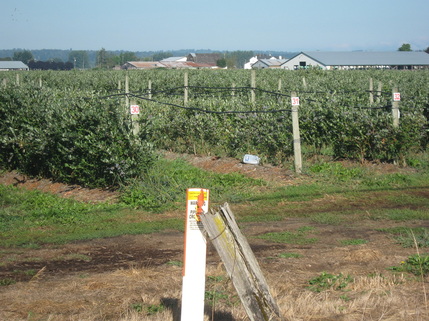 Baring - August 2014 - Submitted by Brian Kingman Baring - August 2014 - Submitted by Brian Kingman By Brian Kingman, CGLAP Secretary CGLAP holds AGM in Abbotsford, BC The Collaborative Group of Landowners Affected by Pipelines met on May 26th in Abbotsford to review this past years’ involvement and preparations for the Kinder Morgan – Trans Mountain pipeline expansion. CGLAP is a pro pipeline group and the largest advocacy group for the Directly Affected land owners who will be involved in the Trans Mountain Pipe line expansion. CGLAP is a registered non-profit association and has Intervenor Status with the NEB. Members are primarily homeowners and farmers located from Rosedale in Chilliwack through to Walnut Grove in Langley. This is a significant stretch of over 60 kilometers of pipeline through the heart of the Fraser Valley and arguably the finest soils in Canada. Because each landowner is directly affected by the pipeline expansion, concern runs high among the members. 83 people or 87% of the members attended the meeting, reflecting the apprehension of the membership. “We would like to see an amicable resolution to all our concerns about the pipeline’s impact on our homes and farms.” said Brian Kingman, secretary of the group, “We have invested a lot of time and money outlining our concerns and proposing solutions to Trans Mountain” said CGLAP President Peter Reus. He also reported progress in meetings with Trans Mountain and is hopeful that all of CGLAP’s issues will be met very soon. A partnership agreement with Trans Mountain seems to be the major hurdle at this time. There is also a real concern of the aspect of new farming regulations that have now commenced due to the new “Safety Zone” of 60 meters, 30 m (100 feet) on either side of the pipeline right of way, itself, 18 m (60 feet) wide. CGLAP has won through the NEB Intervenor Process, establishing the new pipe of 944 cm (36”) depth of 1.2 meters through the Fraser Valley and is trying hard to convince Trans Mountain to lower the 1953 pipe to the same depth as it currently sits at .8 meters (30 inches) or less, far too shallow to effectively handle todays farm machinery and cultivation techniques. CGLAP is also involved with a UFV assisted pipeline temperature affect study to determine the heat generated from the oil passing through the pipe and if there is any detrimental effect on crops grown in the proximity of the pipeline, especially in regard to premature crop ripening. CGLAP director Dave Van Belle of Matsqui Prairie, related the incident of being approached by Trans Mountain when an employee was hand digging a water ditch on and near the right of way to handle a small amount of Big-O drain pipe. CGLAP reaffirmed the current Board of Directors, Garnet Etsell, Gordon Taylor, Dave Van Belle, Philip Graham, Joe Woldanski, Courtenay McDonald, Donna Kingman and welcomed newly elected; Ms. Margaret (Peggy) Livingston of Philps Farms of Mount Lehman. |
Bradner Community NewsNews at your fingertips! Categories
All
Brought to you by...
The Barker Belongs to Bradner...Archives
July 2024
The Barker Belongs to Bradner...The Barker Belongs to Bradner... |
||||||||


